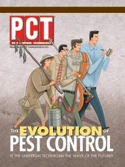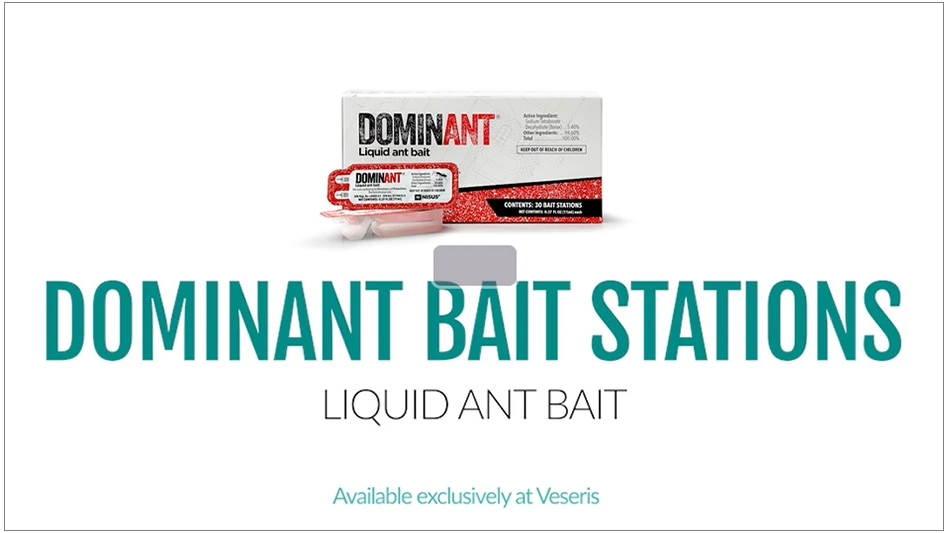In his book, Diseases Transmitted By Rats and Mice, Walter Weber vividly describes the disorders associated with rats and mice and graphically summarizes the threats posed to our way of life by commensal rodents:
"Rats contaminate three times the amount of food they eat. The World Health Organization has estimated that rats destroy enough food to feed 200 million people every year. This destruction includes stored food as well as food growing in the field. Rats kill baby chicks, small ducklings, young pheasants and little pigs. They have torn the nipples off of sows. They even gnawed on the feet of elephants in Germany, forcing the owner to destroy them.
"There is no way of placing economic value on human suffering caused by mice. The greatest loss is probably not what mice eat, but what is thrown out because of contamination — real or suspected. In a six-month period, a pair of house mice deposits about 1,800 fecal pellets. They contaminate about 10 times as much as they eat."
From April 28 to May 7, 2003, the FDA conducted an inspection of a bakery in Cleveland, Ohio. On June 18, 2003, an FDA "Warning Letter" was issued to the owners of the establishment, citing them for, among other things, "Rodent pellets were observed throughout the facility, including both processing areas on the first and second floors [21 CFR 110.35(c)." Two important lessons should be learned from this case in point:
Food manufacturers can be cited under federal law for the mere presence of rodents in their facilities and just as important, such citations are available for everyone’s review (customers, competitors, etc.). I easily found this particular citation (complete with names and addresses) on an FDA Web site. Food processors do not need or want this kind of adverse publicity.
SPECIAL REQUIREMENTS. Rodent control in food plants is not only required by federal laws, such as the Federal Food, Drug and Cosmetic Act (enforced by the FDA) and the various Federal Meat/Poultry/Egg Inspection Acts (enforced by the USDA), it is also demanded by consumers. As a result, rodent control in and around food-processing plants and warehouse has become highly sophisticated and, at a minimum, involves the following:
• Plant schematics showing the location of every rodent control and activity-monitoring device used (devices are sequentially numbered so that activity can be logged for follow-up).
• Tamper-resistant rodent bait boxes (containing anticoagulant baits) strategically located on the outside grounds and laid out in two lines of defense (on the perimeter fence line and along the outside foundation).
• Non-pesticidal or mechanical traps at strategic locations (adjacent to ground level doors, in perimeter sanitation aisles, etc.) inside the facility.
• All rodent control and monitoring devices are inspected and fully serviced on a scheduled frequency with results and conditions reported to plant management for follow-up.
This general formula can be modified somewhat depending upon the facility and local needs. Even though everyone recognizes the need for a systematic rodent control program in food plants, there are some common industry practices that may actually contribute to additional pest management concerns. (In other words, the cure may be worse than the disease). These spin-off problems may pose unforeseen risks in food plants. The following are three examples.
1. Tamper-resistant bait stations that are secured to patio blocks require special attention. Elevating rodent bait boxes off the ground by securing them to the top of patio blocks has become a common practice for pest management professionals. This 1- to 2-inch elevation poses little apparent resistance to rats and mice, while protecting the bait from water and mold damage in low lying or flood-prone areas. Pest management professionals must be aware that invertebrate populations can develop beneath these blocks unless precautions are taken.
One of the first principles of integrated pest management is to lower pest activity in the near vicinity of the plant. Placing a flat stone-like object directly on the ground near the plant can be counterproductive as it may create a resource site for large populations of slugs, crickets, cockroaches, earwigs, sow bugs, ground beetles, springtails and ants.
When populations increase or environmental conditions change, these pests will move into the plant, creating an occasional invader problem. At other times these insects may even migrate into the rodent bait station and feed on the bait. Insects invading the plant or warehouse pose an obvious threat to food, while ants, cockroaches or other insects that consume rodenticide bait create two additional problems for the pest management professional: a) Insect-infested bait is much less attractive to rodents, so control may be hindered; b) Insect fecal droppings in and around rodent bait can signal poor service or if falsely interpreted may interfere with the rodent control effort by directing efforts in the wrong direction.
If patio blocks are used, the pest management professional must treat the soil beneath the block with an effective insecticide and may even have to place an approved, non-rodent repellent insecticide bait inside the rodent station to protect the rodenticide.
2. Rodenticides cannot be used in food-processing or storage areas. A cursory review of rodenticide labels (EPA-regulated documents), as well as USDA and FDA standards, leads one to believe that rodenticide use in food facilities is acceptable. There is no law against swinging a golf club in a thunderstorm either, but does it make good sense to do it? For the most part, rodenticides can be legally used in food plants, but industry standards and food contamination risks discourage it.
Rodenticide movement (translocation) by rats and mice has always been a concern in food plants: the toxic bait itself could become a food contaminant or hidden away it could be a resource site for stored product insects. However, the development of tamper-resistant bait stations to protect bait and the selection of less-portable bait formulations (secured paraffin blocks are less likely to be removed from the station than are small pelletized or seed baits) minimize the potential for bait translocation by rodents.
However, it must be realized that the use of tamper-resistant stations does not guarantee that baits will stay put or never become insect infested. Toxic spills, stored product insects and rodent activity in food plants are of equal concern to the regulatory community and to food processors/warehouse managers. None are tolerated under the Good Manufacturing Practice (GMPs).
Interestingly, rodenticide baits are toxic to warm-blooded animals, but pose no risk to insects whatsoever. Anticoagulant rodenticides interfere with chemicals important to the blood clotting mechanism in warm-blooded animals (mammals) and physically damage minute blood vessels called capillaries. Insects have an open circulatory system (no veins and capillaries) and the chemistry of insect blood clotting differs from that of mammals. Stored product insects thrive on rodenticides. (See figure 1 at right.) Therefore, even though their use is legal under EPA standards, I do not recommend the use of maintenance baiting for rodents inside food facilities for several reasons:
a) There is a high mortality rate on indoor rodent control devices. Rodent bait stations can be damaged by forklift trucks, palletized goods, by the janitorial staff or in other ways that may expose food or food contact surfaces to the rodenticide once it has been released into the environment.
b) If a rodenticide bait was splattered across the floor and ended up beneath a pallet in a warehouse that stored food product for several weeks or months, that rodenticide could become fodder for cigarette beetles, flour beetles, Indian meal moth or any number of other stored food insects. Likewise, bait residues that accidentally end up on pallets containing food could find their way into the process or marketing streams, where they would most certainly be judged as potentially harmful toxic misapplications.
c) Rodenticide baits stored in pesticide distribution warehouses for several months have become insect-infested. Insects infesting a rodenticide could emerge and pose a risk to food storage or processing facilities if placed inside a food plant.
d) Because there is a lag time (days or weeks) between ingestion of the bait and rodent death, rodents will continue to wreak havoc in the plant and may eventually die in some sensitive area of the plant (i.e., inside a wall void, beneath equipment as a resource site for flies or on a pallet of goods being sent to a customer).
e) Like it or not, pest management professionals often encounter crowded storage conditions that prevent scheduled service of every rodent station inside a warehouse. Bait stations that cannot be serviced for one or two months can theoretically produce two generations of stored product insects.
The use of liquid rodenticides, while again legal, is not recommended for many of the reasons listed previously. Tracking powders, oddly enough, are a special problem and require further discussion. Historically, anticoagulant tracking powders have been used inside tamper-resistant bait stations and inside wall voids and around points of entry in food plants. Such cavalier use in and around food plants is discouraged by the food industry and will draw criticism from most sanitation inspection services that envision a potential risk to food safety. Tracking powders can be carried from place to place on rodent fur and paws, stirred up during construction or maintenance activities in a plant, or carried into sensitive food or food-contact areas on air currents.
Additionally, in its 1994 Pesticide Registration Notice (PR 94-7), the Environmental Protection Agency makes it clear that tracking powders are not to be used in tamper-resistant bait stations since these powders (by their nature) are designed for placement in that part of the station through which rodents travel (the entry ways and tunnels). These are the very parts of the station that are accessible to children and non-target animals. Consequently, the routine or frequent use of tracking powders is discouraged by regulation and by standard food-industry practice.
3. Mechanical rodent traps only have to be serviced monthly. Mechanical or non-pesticidal traps are routinely used inside food-processing plants and warehouses. As a rule of thumb, stations are placed on either side of all ground-level doors and at about 30-foot intervals along sanitation perimeter aisles. Traps are numbered sequentially and may include any kind of snap traps, glueboards or some combination of these. The difference between mechanical traps and rodenticide bait stations are immediate gratification: when a rodent checks into a rodent trap, it is not meant to leave.
The fact that traps capture and contain rodents makes it absolutely essential to inspect and service such stations weekly. If rodents are allowed to die and decay inside a trap and are left unattended, other potential food contamination risks occur: fur (hairs) will release from the carcass and may become airborne, odors will develop and insects will attack the decaying remains. I have found hide beetles, Trogo-derma larvae, psocids and flies feeding on dead rodents in traps (see figure 2 on page 66). Since phorid flies can develop from egg to adult in about two weeks, servicing traps on a monthly or semi-monthly basis permits these and other food-plant pests to multiply in what is considered a pest control device.
SUMMARY. Rats and mice pose a serious public health risk and are prohibited in food facilities by legal mandate and customer demand. Unfortunately, rodent control devices and materials can, if mismanaged, exhibit unreasonable risk to the food supply. Rodenticides are toxic chemicals and must not be allowed to contaminate food or food contact surfaces and they must not serve as a resource medium for stored product insects. Likewise, trapped rodents or outdoor bait stations can attract insect pests if improperly maintained.
Pest management professionals who implement proper techniques for rodent control in food plants have a definite advantage over their competitors when it comes to winning such accounts.
Editor’s note: Diseases Transmitted by Rats and Mice by W.J. Weber, was published in 1982 by Thomson Publications, Fresno, Calif.
The author is a consulting entomologist, Technical Directions Inc., Decatur, Ala. He can be reached via e-mail at mholcomb@pctonline.com.

Explore the November 2003 Issue
Check out more from this issue and find your next story to read.
Latest from Pest Control Technology
- Rose Pest Solution Promotes Kandler to District Manager of Columbus (OH) Service Area
- Webinar: Maximizing Cash Flow — Key Strategies for Business Growth
- WorkWave Announces Wavelytics
- Rising Rat Populations Linked to Warming Temperatures, Urban Growth, Study Finds
- How Might the 2024 Elections Impact PCOs
- Keeping Track of Termite Identification
- Mosquito Joe Earns EPA's PESP Gold Level Designation
- Texas PestVets Coat Drive Collects Over 850 Items for Soldiers’ Angels





